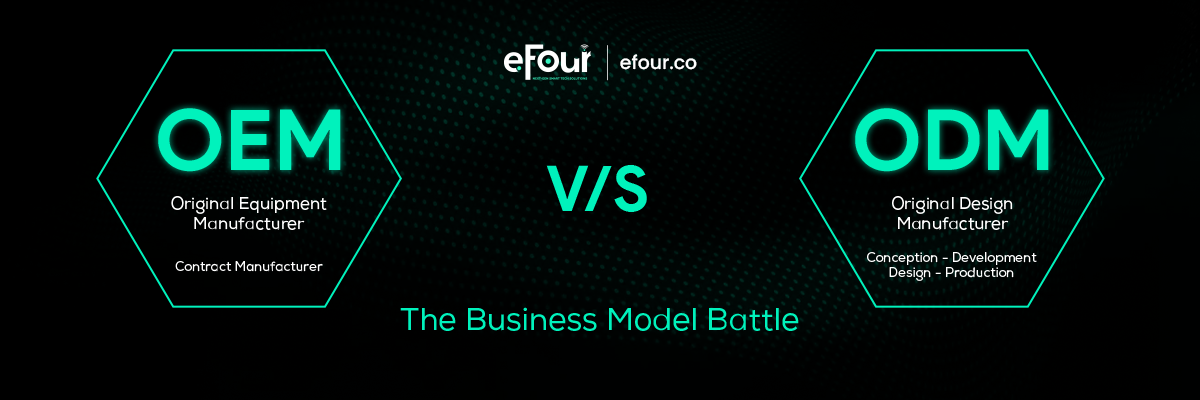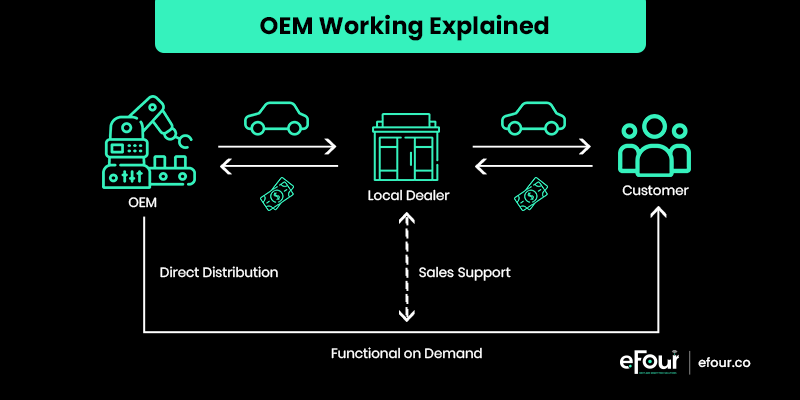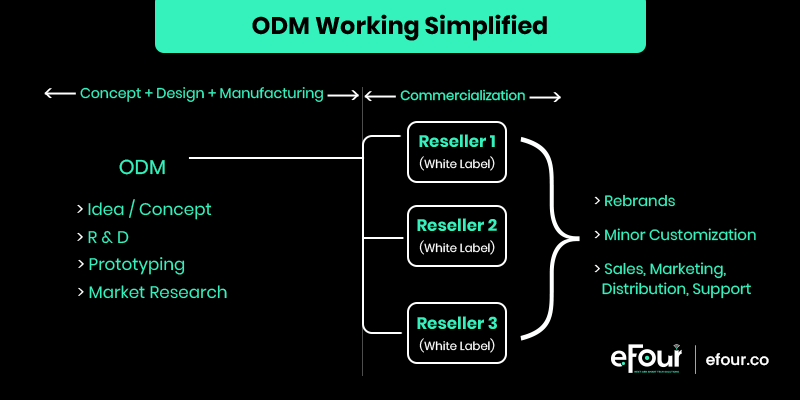
People have many a time used the concepts of OEM and ODM interchangeably. For added confusion, there is a slight difference between the two, which many industry experts highly misunderstand. This blog will guide you with everything related to the OEM vs ODM business models.
To understand the differences between OEM vs ODM, let us first explore the relationship between client companies and ODM or OEM.
A Trail to Understand Relationship Between Client, ODM & OEM
1. First of all, the client company maps out their product idea. This includes the design, purpose, functionalities, features, and other product details.
2. After formulating the product idea, the company can conduct detailed market research.
3. After carrying out a market study, the client company can ensure whether the idea is valid enough or not. Also, whether the product solves or meets the customers’ pain points.
4. Resultantly, there can be two scenarios
4(A) – The idea is invalid, so the client company is back to square one. It has to go and repeat the above steps.
4(B) – The idea is valid enough, implying that it ticks all the boxes of a checklist that meets the user’s demands. Also that it has a near-to-perfect design. This is pretty much like a green signal to proceed further.
Further steps can be followed in scenarios like 4(B).
5. Up next is the manufacturing process:
5(A) – We all know that R&D is not only a time-consuming process but also requires a heavy amount of finances. Now the question arises of whether or not the company has a budget for in-depth Research & Development. If yes, they can proceed to hire an OEM. This will further involve manufacturing the product and shipping it back to the client.
5(B) – Now, just in case the company does not have a budget for R&D, then they can hire an ODM. This means that the hired ODM will further take care of the product’s research, manufacturing, and shipping back to the client.
6. Whether the client product company chooses to go with the ODM or OEM model, they sell the end product to customers after receiving the delivery.
But First, What is OEM & ODM Service?
While you might observe that the end product is the same, the business model varies radically.
ODM and OEM have become buzzwords in manufacturing, product engineering, and industrial design.
OEM companies build products based on the designs provided to them by customers. Whereas, the ODM manufacturers design components or the entire products themselves before manufacturing them for customers.
Furthermore, this blog will guide you with the in-depth meaning of ‘What is OEM and ODM?’
What Does OEM Mean?

OEM is the acronym for ‘Original Equipment Manufacturer’.
OEM products typically contain some component or service used in an existing product. They are typically associated with some support called OEM support services. The product development teams spend months, sometimes years, creating new products.
The market capitalization of the world’s automotive OEMs rose up to 1.5 trillion USD in 2020. The figure will rise higher.
Let’s imagine a scenario with Apple as the client company in it. Without a doubt, it has enough budget to do the R&D. Also, considering its user base, it ensures the return on this investment. Hence, it chooses to go with the OEM model. It prepares the design and then shares it with the bulk manufacturer to produce the models.
The client company prepares the design for the manufacturing company, i.e., the OEM. OEMs are companies that manufacture products based on the design in the blueprint keeping in mind the client’s specifications. In this case, the client has done all the homework from his end. All the theory is his job. Merely the onfield manufacturing is to be done by OEM on behalf of the company.
What is ODM?
ODM is an acronym for ‘Original Design Manufacturer’.

Examples have made student learning such a smooth experience, isn’t it? We will give you the example of American restaurants’ takeout menus. Don’t they all look pretty similar? Well, this will help you understand the ODM model.
When it comes to manufacturing, this model is inclined toward customizing and producing products and selling them at a profit to its buyers.
A real-life example would be car chargers. Multiple companies manufacture car chargers for the same car model, essentially the same design, yet they are custom branded, colored, and packaged differently.
Table of Differences – OEM vs ODM
While OEM is often referred to as a service, on the other hand, ODM is referred to as a product. Here is a table to discover the difference between OEM vs ODM business models.
| PARAMETERS OF DISTINCTION | OEMs | ODMs |
|---|---|---|
| Full Form | Original Equipment Manufacturing | Original Design Manufacturing |
| First used in? | 1962 | 1906 |
| Meaning | In charge of developing, constructing & selling the product to another company. | In charge of developing the product according to another company’s specifications. |
| Marketing responsibility/ Creating sales opportunities | Self. | Manufacturer is free from this responsibility. |
| Labeling | It is private labeling. | It is non-private labeling. |
Benefits of Choosing OEM Business Model in Hardware Production
Let us check out the advantages of choosing the OEM business model:
Benefits of Choosing ODM Business Model During Device Production
Let’s look into the benefits of choosing an ODM business model.
How to Choose Between ODM vs OEM?
Now that you have learned the difference between OEM and ODM, let us now guide you on how to choose between the two.
Launching a new product in the market is the goal. The choice of a business model will ultimately depend on the circumstances. A company with a research and development budget can go with an OEM. On the other hand, if time and resources are scarce, ODM is the best bet.
OEM vs ODM Conclusion – How can efour Help??
To help you get the most out of your hardware investments, you need to get in touch with a reliable product/hardware engineering company. Why look for more options when you can connect with experts at efour?
We have professionals with the on-field experience to provide you with end-to-end hardware engineering services. We specialize in providing best-in-class quality services in manufacturing low-power consuming wireless device designs and hardware in compliance with industry standards.





